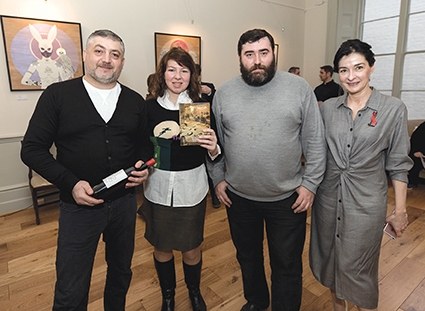Taking Craft Wine to the UK: English Grapes in Georgian Qvevri
It’s becoming almost impossible to get a beer or a gin and tonic in a London pub without first having to sift through the various ‘craft’ and microbrew varieties on offer. Indeed, there has been such an explosion of independent breweries and distillers offering a greater complexity of flavour than your standard pint of Carlsberg or Gordon’s gin and Schweppes tonic that the big names like Heineken are getting behind the trend with their own versions of IPA and pilsner, even going so far as to purchase the Californian craft-brewer Lagunitas in May last year.
Beer and spirits have been at the forefront of the craft trend, but the concept hasn’t really caught on here in terms of viniculture. There are a couple of reasons for this: English wine is notoriously difficult to produce due to our frequently inclement, mutable weather; and the amount of space, time, and care required to make production economically viable vastly exceeds that needed for a microbrewery or a brewpub.
‘Project Marani’ is a venture by Artisan Cru which aims to redress the balance. Founded by Henry Mchedlishvili, Ian Cole and Joe Simms, they have correctly realised that the Georgians have an 8,000 year tradition of what could anachronistically but effectively be marketed as ‘craft’ wine production, and seek to create a hybrid wine using English-grown grapes fermented in Qvevri. It is an unusual idea but it ticks the right boxes: the British market has become far more open to difference and quirk in terms of wine-making; the method enables the wine to be produced without the addition of preservatives; and consumers are more and more comfortable eschewing mass-produced fare in favour of products made by plucky underdogs with an endearing narrative behind them.
With regards to the difficulties explained above, Artisan Cru have gone some way towards mollifying them by teaming up with the British-Georgian Chamber of Commerce, Chris Foss: head of the wine department at Plumpton College, and the renowned Georgian vintner Giorgi Barisashvili. The BGCC have acted as intermediary and have developed an exchange programme for students between Plumpton College and the Free University Georgia, whilst Barisashvili has overseen and advised on the process from start to finish. It’s yet another example of the imagination and vision that exists in Georgia and the UK which is always encouraging.
All well and good, but the important question is what does the wine actually taste like? It’s a tricky one to answer: at the project’s launch on 22 January it was explained that thanks to that scourge of the grape – the capricious British climate – the harvest had been of insufficient quality to make an acceptable wine and it was instead made from grapes imported from Puglia. It’s at a very early stage and the wine has not yet matured, but they have proved that it is possible to produce a drinkable Qvevri vintage in the UK using European grapes. It was fascinating to taste it at its early stage of development, the flavours stood out individually, not having had the time to coalesce properly, but – especially concerning the Montepulciano and the Merlot – it was clear that the disparate elements will come together over time and produce something really special. In each wine I noticed an appealing earthiness to the flavour which betrayed the hallmarks of the Georgian method.
Alas, my palate is woefully underdeveloped: I’m exactly the sort of person who buys a £10 bottle of Australian Cabernet Sauvignon over something more potentially exciting (but more risky), however it’s not just my word you have to take. I spoke to a well-known and established sommelier in attendance who explained that – thanks to advances in technology – it’s entirely possible to create a decent tasting wine from the most paltry of origins. With the Qvevri method though, there is nowhere to hide. Unusually, each wine’s body and flavours are already significant at this very early stage, just needing a little more time to develop and my sommelier thought that in a blind taste test, given the age of the vintage (2017), most people would wrongly assume that there was some contemporary wizardry behind it.
It is hard to tell where this enterprise might lead – it is still in its research and development stage after all – but the care and devotion given to the project is palpable and there are plans to open a public bar in London alongside partnerships with interested restaurants. Whatever they decide to do with it, I await the opportunity to buy a bottle with relish.
Robert Edgar












